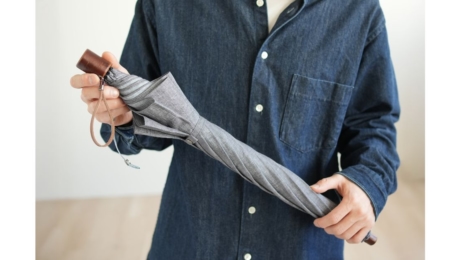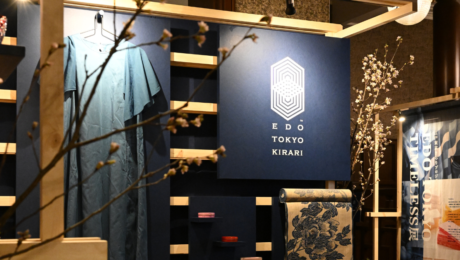![[EDO TOKYO RETHINK] Edo Tokyo Kirari Project × Contemporary Art](https://fr.edotokyokirari.jp/wp-content/uploads/20230213190243/297a0701b09090f89daa2e1dc9313b4a-1440x720.jpg)
![[EDO TOKYO RETHINK] Edo Tokyo Kirari Project × Contemporary Art](https://fr.edotokyokirari.jp/wp-content/uploads/20230213190250/e1315f916474ed82dbabf1a33e0ec036-750x750.jpg)
[EDO TOKYO RETHINK] Edo Tokyo Kirari Project × Contemporary Art
2023.02.15
LIFEThe exhibition will be held at Koishikawa Korakuen Gardens, which is celebrating 100 years since its designation as a cultural property, under the direction of contemporary artist Noritaka Tatehana.
![[EDO TOKYO RETHINK] Edo Tokyo Kirari Project × Contemporary Art](https://fr.edotokyokirari.jp/wp-content/uploads/20230213190257/e00aac3b3c04743c959b8a356ce78448.jpg)
About the Edo Tokyo Rethink Exhibition
The Edo Tokyo Kirari Project’s mission is to use new perspectives to refine techniques and products rooted in the traditions of Edo-Tokyo, and to present them with the world. The fruits of the project are being shared with the general public through the Edo Tokyo Rethink exhibition (held in the Koishikawa Korakuen Gardens), led by exhibition director Noritaka Tatehana, a contemporary artist active in both the Japanese and overseas modern art worlds. At the exhibition, Tatehana has welcomed Tokyo’s traditional craftsmen as collaborators, presenting the value and appeal of historical traditional industries in a new way. The starting point of this process was “rethinking,” Tatehana’s creative approach that seeks to answer the questions “how should we look back on Japan’s ancient traditional culture and how should we embody them for the future?” The first of these exhibitions was held two years ago, and each year it has shown new artworks and valuable historical materials shared by traditional craftsmen. Koishikawa Korakuen Gardens, the site of this year’s exhibition, offers exceptional vistas that showcase the changing faces of the seasons. It has been designated by the Japanese government as a special historic site and special place of scenic beauty.
![[EDO TOKYO RETHINK] Edo Tokyo Kirari Project × Contemporary Art](https://fr.edotokyokirari.jp/wp-content/uploads/20230213190314/54c1edaca1c6d1c5375225ec36893ae2.jpg)
Exhibition Director
Contemporary Artist. Noritaka Tatehana
Noritaka Tatehana was born in Tokyo in 1985. He graduated from the Tokyo University of the Arts Department of Crafts where he majored in Textile Arts. His graduation work, “Heel-less Shoes,” were inspired by the tall wooden geta sandals of high-ranking courtesans and are famed for being worn by Lady Gaga. He now works as a contemporary artist, taking part in exhibitions in Japan and abroad, and is dedicated to creating original works with traditional craftspeople. His pieces are part of the permanent collections of New York’s Metropolitan Museum of Art and London’s Victoria and Albert Museum.
![[EDO TOKYO RETHINK] Edo Tokyo Kirari Project × Contemporary Art](https://fr.edotokyokirari.jp/wp-content/uploads/20230213190325/49788d82b63a9c643c93f4efed411dc8.jpg)
![[EDO TOKYO RETHINK] Edo Tokyo Kirari Project × Contemporary Art](https://fr.edotokyokirari.jp/wp-content/uploads/20230213190329/7da34861dd4a21450310c88243d09fc9.jpg)
![[EDO TOKYO RETHINK] Edo Tokyo Kirari Project × Contemporary Art](https://fr.edotokyokirari.jp/wp-content/uploads/20230213190320/eca605a0f8a2402cc36118870bb5628f.jpg)
Exhibition view of the “Edo Tokyo Rethink Exhibition” held in the previous year.
These photos show the exhibition view of “Edo Tokyo Rethink -The Future of Traditional Industry Seen Through Art at the Kyu-Iwasaki-tei Gardens-,” which was held at the Kyu-Iwasaki-tei Gardens and opened online in 2022. These works are a collaboration between contemporary artist Noritaka Tatehana and traditional industry operators participating in the Edo Tokyo Kirari Project.
Special site for the previous year’s exhibition: https://en.edotokyokirari.jp/exhibition/
![[EDO TOKYO RETHINK] Edo Tokyo Kirari Project × Contemporary Art](https://fr.edotokyokirari.jp/wp-content/uploads/20230213190306/fc2a3a8eef0ed8080296cba7a9c0e0ea.jpg)
Special Historic Site and Special Place of Scenic Beauty
Koishikawa Korakuen Gardens
The Koishikawa Korakuen Gardens dates back to the early Edo era. Construction of the garden began in 1629, 29 years after the Battle of Sekigahara, by Tokugawa Yorifusa, the first leader of the Mito Domain. It was completed by Yorifusa’s third son, Mitsukuni, also known as Mito Komon, the second lord of the Mito Domain. Its name, “Korakuen,” which means “The Garden of Happiness that Follows,” is said to come from a line in the Memorial to Yueyang Tower, written by Fan Zhongyan, a politician of the Northern Song dynasty of ancient China: “I wish to be the first to worry about the nation’s woes and the last to share in its prosperity.” Mitsukuni is said to have given it this name upon the advice of Zhu Zhiyu, a Ming dynasty Confucian scholar. Chinese aesthetic sensibilities can be seen throughout the garden, such as in its Engetsu-kyo (literally, “Full Moon Bridge”) and Saiko-no-tsutsumi (“Bank of Lake Saiko”). The strolling garden, with its artificial hills and ponds, provides beautiful vistas in every season through its plum trees, cherry trees, irises, and autumn foliage. It is one of the nine gardens designated as cultural assets in Tokyo, and in 1952 was designated as a Special Historical Site and a Special Place of Scenic Beauty under the Law for the Protection of Cultural Properties.
Official Website
https://www.tokyo-park.or.jp/park/format/index030.html
Exhibition Outline
Title: Edo Tokyo Rethink
Date and Time: Saturday, March 11, 2023 ~ Wednesday, March 15, 2023, 9:00 a.m. ~ 5:00 p.m. (entry closed at 16:30)
Organizers: Tokyo Metropolitan Government / Edo Tokyo Kirari Project
Venue: Special Historic Site and Special Place of Scenic Beauty Koishikawa Korakuen Gardens
Admission: The following fees are required to enter Koishikawa Korakuen Garden.
General admission: 300 yen, 65 years old and over: 150 yen
*Elementary school students or under, and junior high students residing in Tokyo are admitted free.
*Holders of one of the following and their attendants are admitted free:identification booklet for the physically handicapped, Ai-no-techo (for the mentally handicapped), mental disability certificate, or mental education and treatment certificate.
Exhibitor
Edo Moku-hanga Takahashi Kobo, Edo Kiriko Hanashyo, Wadaiko Miyamoto Unosuke Shoten,
Tokyo Kumihimo Ryukobo, Edo Kumiko Tatematsu, Shin Edozome Marukyu Shoten
Photo by GION



![[Yonoya Kushiho] Le soin capillaire pour homme avec les peignes en buis](https://fr.edotokyokirari.jp/wp-content/uploads/20250516110718/9f15df63b8f439a3c2777a9a90e88bdb-460x260.jpg)
![[Shiina Kiriko (GLASS-LAB)] Une collection de bouteilles d’art immersive qui donne vie à l’univers de Hokusai](https://fr.edotokyokirari.jp/wp-content/uploads/20250325153658/10575b409abae1cb5c3ecfaf8449e969-460x260.jpg)
